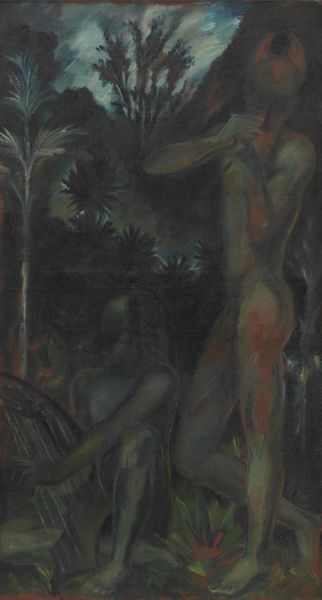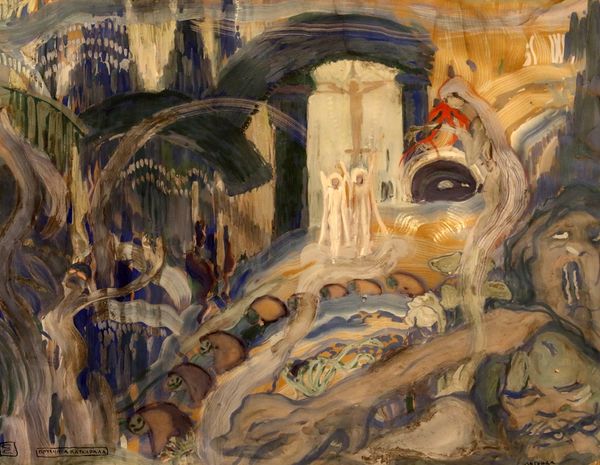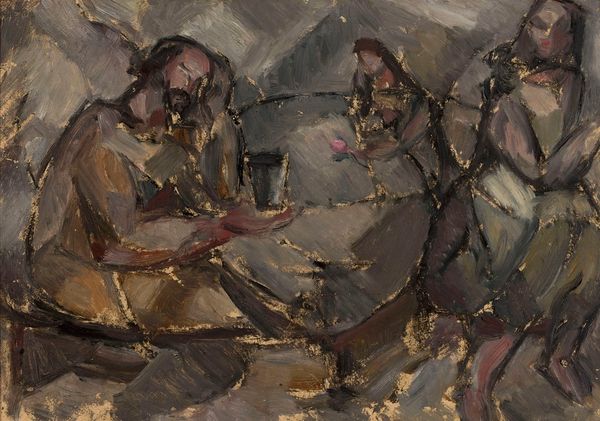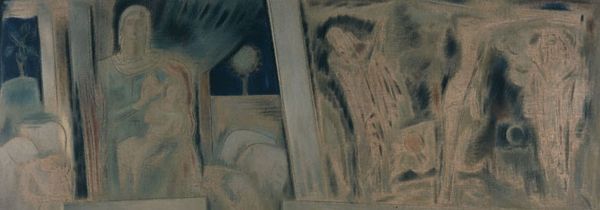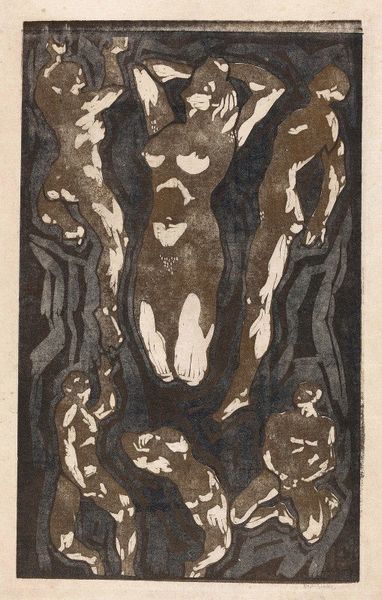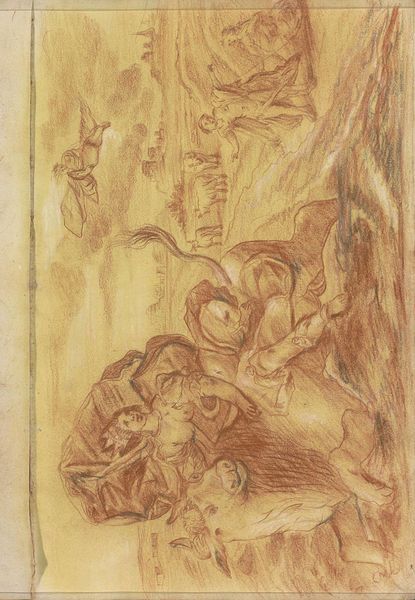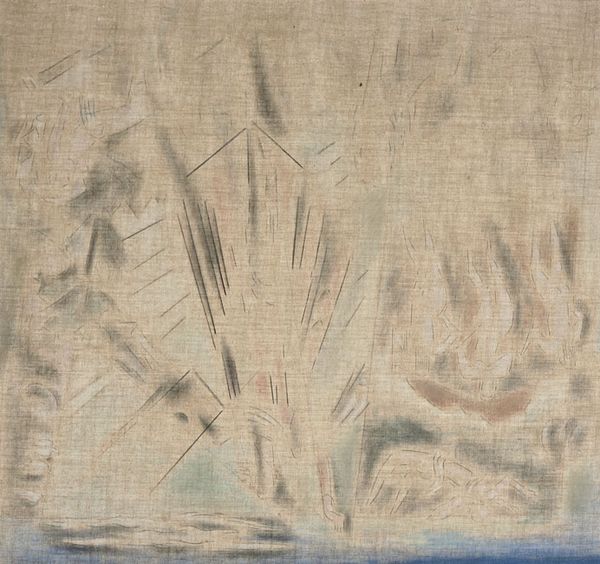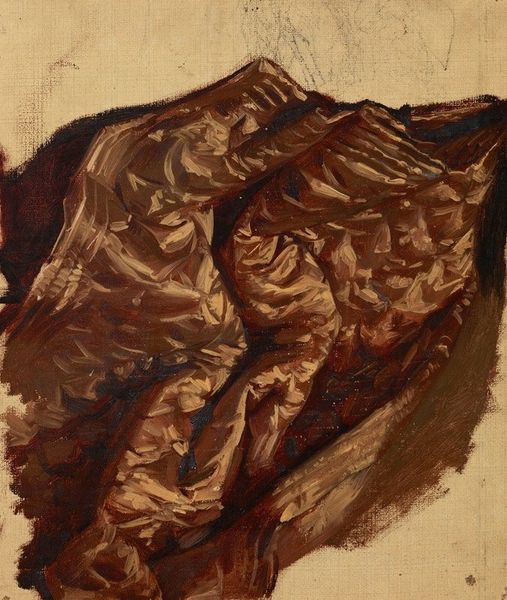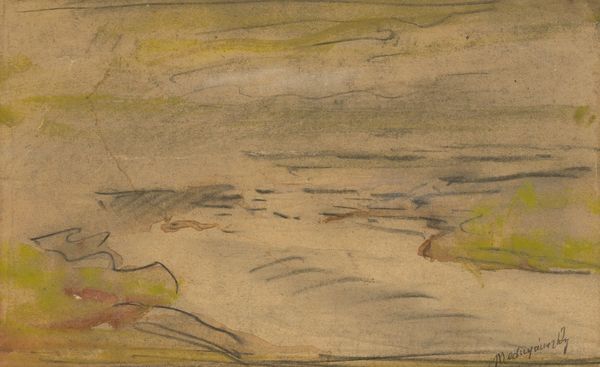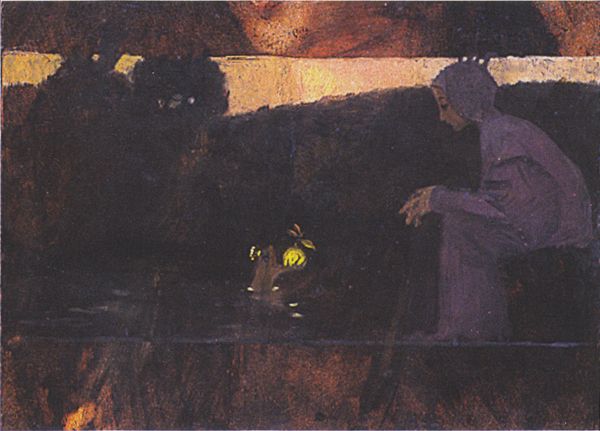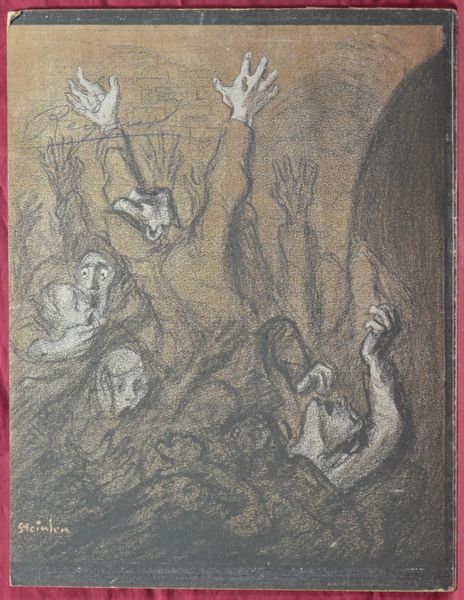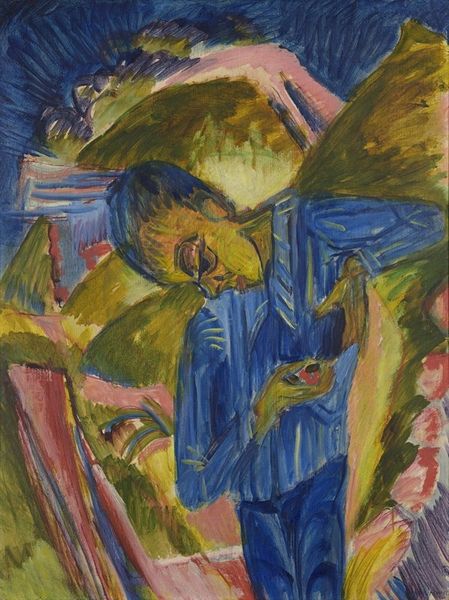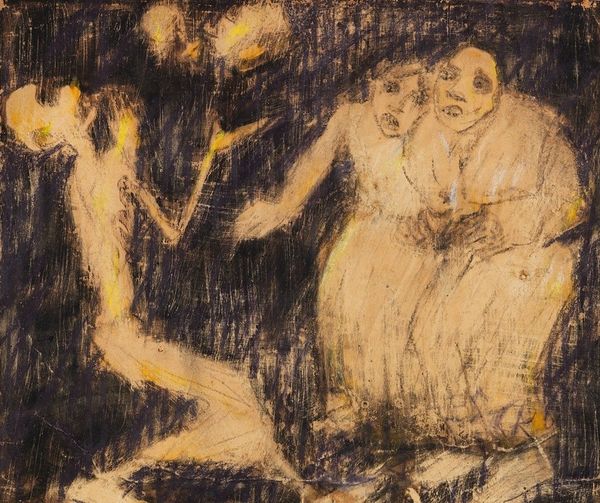
Dimensions: 117 x 74 cm
Copyright: Public domain
Curator: What a fascinating oil painting—Nicholas Roerich’s “Ashram,” painted in 1933. It’s currently held at the Nicholas Roerich Museum in New York. Editor: It strikes me immediately as a deeply symbolic landscape, the scale is intriguing. The looming cliffs and that tiny figure in the boat create a profound sense of solitude and perhaps reverence. Curator: Solitude and reverence are key elements. Roerich's spiritual interests are palpable here; Ashram means a secluded monastery, typically in the Himalayas. This highlights his deep engagement with theosophy and Eastern religions, which strongly shaped his artistic vision. We can also recognize an Orientalist tendency visible through his idealized vision of Eastern spiritual sites. Editor: Absolutely. Note how Roerich employs the composition to emphasize verticality and perspective—a pathway ascends mysteriously between massive cliff faces, creating a sacred and inaccessible place. How do you see the use of color contributing to that effect? Curator: The restricted palette of muted reds and browns against the almost iridescent blue-green water enhances the sense of mystery. The brushwork appears quite stylized. Look at how the carved elephants in relief on the rocks on both sides function structurally. Editor: Good eye. Those stylized carvings integrated into the cliffs make one ponder on the history embedded in these natural forms. Given Roerich’s political activities – including the Roerich Pact to protect cultural objects – can you tell us if his work served any ideological purpose during that time? Curator: Definitely. Roerich actively promoted spiritual internationalism and cultural preservation. His art frequently served as a vehicle for these messages. Roerich aimed to transcend cultural and national boundaries, his artwork invites reflection on deeper, universal values. This resonates particularly in light of the escalating political tensions worldwide. Editor: Considering his activism, and from a historical perspective, what influence do you see from artistic symbolism or religious imagery and his art overall? Curator: I'd say, Roerich employs symbolism masterfully—transforming simple landscapes into profound spiritual statements about cultural interconnectedness. The image presents cultural preservation as a vital force of resistance during times of conflict. What a thought provoking painting... Editor: Yes, the way he balances formal and narrative elements definitely draws one into deeper exploration. Thanks for sharing that perspective!
Comments
No comments
Be the first to comment and join the conversation on the ultimate creative platform.
